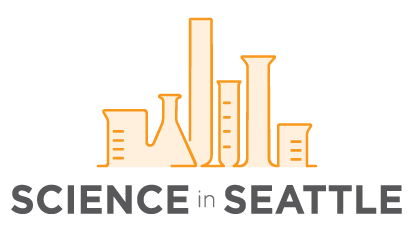The gleaming skyscrapers towering along Park Avenue always seemed opaque and out of reach to Dr. Matthias Stephan during his graduate student days in New York City.
“I remember walking along, looking up, wondering what went on inside,” the Fred Hutchinson Cancer Research Center bioengineer recalled.
Stephan assumed that whatever the busy employees did at the banks of computers stretching behind those acres of glass would remain a mystery to him. But more than a decade after receiving his Ph.D., he found himself in a swiftly ascending elevator, rising over a sweeping view of Central Park.
The academic scientist had developed nanoparticles that he hoped would someday quickly and easily engineer anti-cancer immune cells inside patients, and he needed an industry partner to get his tiny tech out of the lab and into the clinic. Like more and more researchers, he was about to begin a crash course on how science and financial investment connect.
Industry: a new world for scientists
Scientists are trained in making discoveries, not in writing patents, scoping out business opportunities or making connections with venture capitalists. Though Stephan would ultimately co-found the biotech startup Tidal Therapeutics (later bought by pharma giant Sanofi) to commercialize his nanoparticle immune-cell engineering approach, when he first envisioned bringing his technology to patients, he barely knew where to begin.
Fred Hutch business development staffers guide researchers at every step, said Hilary Hehman, Fred Hutch’s associate vice president of strategic partnerships.
“We keep an eye on the entire Hutch [scientific] system,” she said. Different business development teams support the patent-writing and -filing process, identify market opportunities and potential customers, and help researchers connect to industry partners to license technology or even create a biotech startup.
The Hutch’s desire for a stronger focus on technology transfer was inspired by the 2013 launch of immunotherapy-focused biotech company Juno Therapeutics, now a Bristol Myers Squibb company. A joint effort between Fred Hutch, Memorial Sloan Kettering and Seattle Children’s Research Institute, Juno secured $120 million in funding, making it one of the largest biotech launches in history. In 2018 Celgene Corporation acquired Juno for $9 billion.
“The organization recognized the value of that win,” Hehman said.
A steady pipeline of successful biotech ventures, whether new spinouts or licensing deals to established companies, could provide a reliable research-supporting revenue stream alongside grants from the National Institutes of Health and philanthropic donations. To get there, the Hutch “hit refresh” on its business development strategy, Hehman said.
Following the Juno launch, previous Hutch President and Director Dr. Gary Gilliland brought on Dr. Niki Robinson, who now oversees all strategic planning for the center, with the goal of strengthening the flow of the institution’s business-development deals. Robinson fundamentally rebuilt the Hutch’s strategic approach to technology transfer and pipeline curation, Hehman said.
As part of her restructuring, Robinson aimed to create an externally facing team specifically focused on building recognition of the Hutch’s innovation pipeline in the venture, pharma and biotech communities. She recruited Hehman to build and lead this team five years ago.
Initially, the external business development team’s main focus was overcoming hesitancy from industry insiders who respected the Hutch’s scientific bona fides, but erroneously assumed that its development pipeline would automatically funnel to Juno.
“Once people in the venture community realized we’re definitely open for business with anybody — East Coast, West Coast, global — they literally started showing up at the door. The floodgates opened,” Hehman said.
The Hutch’s revamped approach was guided by two leaders with deep expertise spanning academic, clinical and translational research: Gilliland and current President and Director Dr. Tom Lynch, who took the helm at Fred Hutch after stints at the Yale Cancer Center, Massachusetts General Hospital and Bristol Myers Squibb, where he was chief scientific officer.
“The world benefits from [a culture of commercialization],” said Lynch, who is participating in small-format conversations to build a network between the Hutch and interested industry partners. “Patients benefit, the Hutch benefits, the research benefits. And so I want to incentivize that culture.”
Stephan lauded the business development team for their expertise and protective instincts. Their specialized knowledge was invaluable during the time-consuming patent-writing and filing process, and they helped defend him against investors who would rather pick his brain for their own purposes than partner to advance his ideas, he said.
The process “gave me visibility into the corporate side,” said lymphoma researcher Dr. Brian Till about the Hutch’s revamped business development office. Till developed an immune-cell engineering approach to target a molecule common to certain blood cancers and worked with Hehman’s office to patent his approach and license it to Mustang Bio, which is now testing it in a clinical trial.
Stephan said his experiences presenting to potential financial backers have helped him better understand how they (and the U.S. Food and Drug Administration) assess potential therapeutic innovations. He now considers how to avoid overengineering a product and how to manufacture it at a large scale while keeping it affordable.
“You see the world differently,” he said. “There’s less focus on what to publish, more on what’s feasible to translate to patients.”

